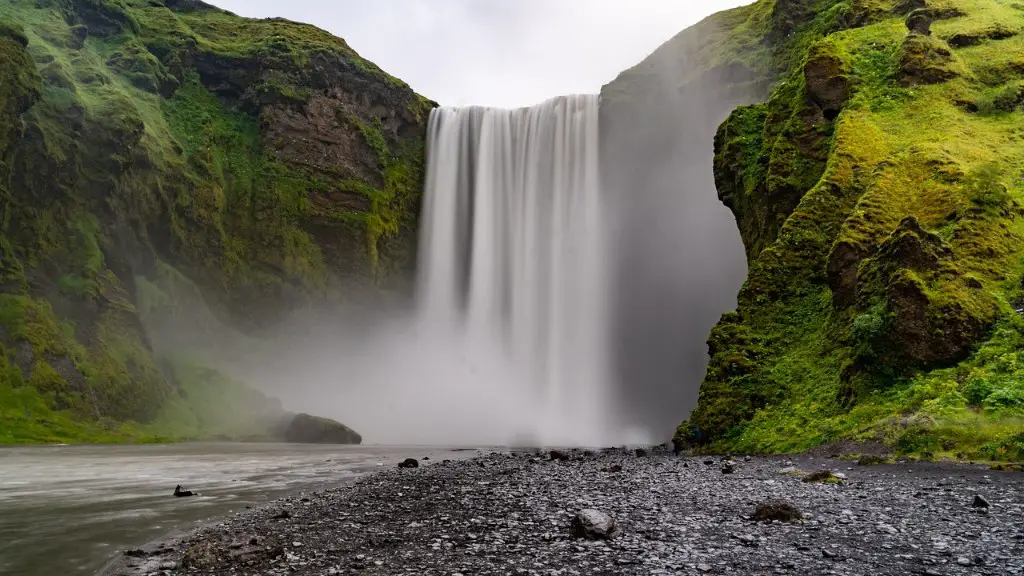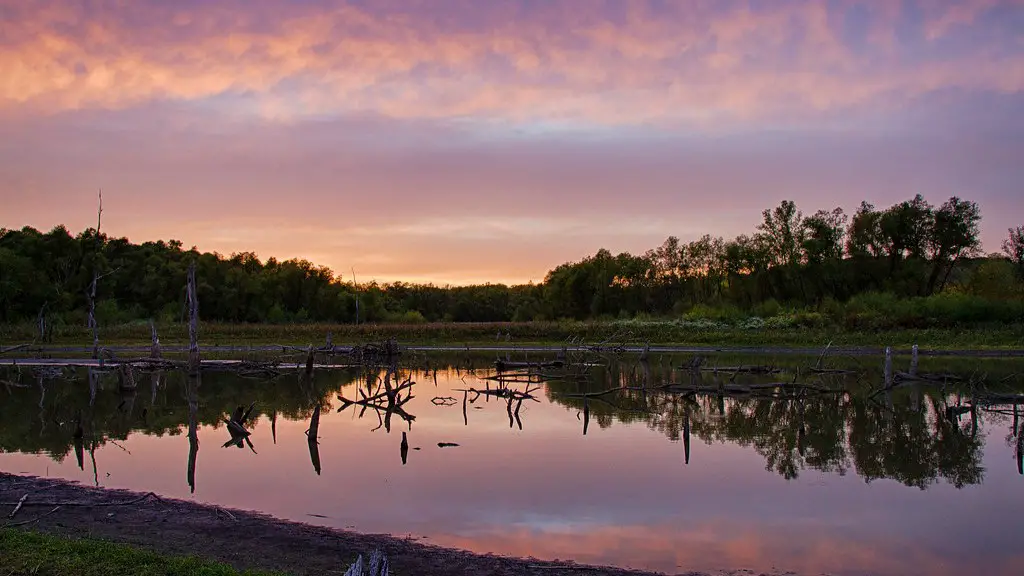The Ganges River is the largest river in India and one of the most sacred rivers in Hinduism. For centuries, Hindus have worshiped the Ganges as a goddess and have used its waters for purification rituals. Today, however, the river is in danger. The Ganges is severely polluted with industrial and human waste, and its once-pristine waters are now filled with toxic chemicals and garbage. As the population of India continues to grow, the pollution of the Ganges is only getting worse. If nothing is done to clean up the river, it may soon become too polluted to support life.
The Ganges River is a sacred waterway in Hinduism and is thought to be a holy site. The river is also a major source of water for many people in India. In recent years, the river has become polluted with trash and sewage. The government has been working to clean up the river, but it has been a difficult task.
Why is the Ganges drying up?
The Gangetic aquifers are an important water source for the Ganges river, and their depletion could have a major impact on the river’s ecosystem. In particular, the river is already very polluted, and this could worsen if the aquifers are not replenished.
The paper argues that the flow of rivers will not be affected at all by glacial melt. The main source of river flow is rain and snowmelt, which will continue even after the glaciers disappear. This is because the glaciers only make up a small fraction of the total water in the rivers. Therefore, their melted water will not have a significant impact on the overall flow.
Why is the Ganges being polluted
The Ganges is a sacred river to Hindus, and is also a major source of water for many people in India. However, it is also one of the most polluted rivers in the world. Untreated sewage, industrial waste, agricultural runoff, and remnants of partially burned or unburned bodies from funeral pyres all contribute to polluting the Ganges. In addition, animal carcasses are often thrown into the river, further contaminating the water.
The government of India has taken some steps to try to clean up the Ganges, but much more needs to be done. In order to protect the river and the people who depend on it, it is important to raise awareness about the pollution problem and to find ways to reduce the amount of waste that is dumped into the river.
The Indus, Ganga and Brahmaputra river basins are set to see an increase in river runoff by 2050 and 2100, according to projections by the Intergovernmental Panel on Climate Change (IPCC). This increase in runoff is likely to result in increased flooding and water insecurity in the region, which is home to some of the most densely populated areas in the world. The IPCC’s Sixth Assessment Report on Impacts, Adaptation and Vulnerability highlights the need for increased adaptation and mitigation measures in the region in order to cope with the expected impacts of climate change.
What is the biggest threat to the Ganges river?
The biggest threats to river dolphins are fishing (they’re targeted for their oily blubber), as well as toxic pollution, dams and barrages in the river.
The Ganges basin is being cleaned intensively which has resulted in improving the water quality to never-before standards. In a reel shared by ANI, the report claims that cleaning the Ganga river is becoming a success story. Take a look.
The video reel shared by ANI shows the amazing transformation of the water quality in the Ganges basin. Before the clean-up operation began, the water was murky and full of pollutants. However, after the clean-up, the water is now crystal clear.
This is a great achievement for the Indian government and shows that their efforts to clean up the Ganges river are paying off. This will have a huge positive impact on the environment and the people who live in the basin.
How toxic is Ganges?
The pollution in the Ganges river is caused by the large amount of sewage that is emptied into it every day. Around three million litres of sewage are dumped into the river each day, and only about half of that has undergone any kind of treatment. This has made the river’s water very dirty, and it is considered one of the most polluted waterways in the world.
The fact that the Ganga water contains Oxygen levels 25 times higher than any other river in the world is noteworthy. This is one of the reasons of self-purifying attributes of River Ganga and high levels of oxygen in the waters of Ganga gives it the unique ability to remain fresh over a prolonged period of time.
Do people get sick from bathing in the Ganges
It is heart-wrenching to see the state of the Ganges river – once a sacred and holy body of water that is now so polluted that it is causing illnesses and deaths. Hindus have long held a deep spiritual connection to the Ganges and to see it in such a state is devastating. We must come together and do whatever it takes to clean up this river and restore it to its former glory.
The Namami Gange scheme appears to be making some progress in cleaning up river Ganga. Chief Minister Yogi Adityanath of Uttar Pradesh has stated that the river’s condition has improved and it is now much cleaner than it was previously. This is definitely a positive development and we hope that the trend continues so that river Ganga can be restored to its former glory.
Does the Ganges River smell?
The river stinks because of the untreated sewage and effluents from the tanneries that flows into it. This is a serious problem because it pollutes the river and endangers the people who use the river for bathing and drinking.
The river is considered to be a sacred and pure entity by the Hindus. However, they also believe that the cleanliness of the river is not in any way conditional to its purity. Hindus make a distinction between the material and the spiritual, explaining the paradox that the river’s purifying waters can also be used for waste disposal.
What river in India is drying up
The Yamuna River is a major source of water for Delhi, and the city is heavily reliant on it for both drinking and irrigation purposes. However, the river is now highly polluted, and this is exacerbating the already existent drinking water problems in several areas in Delhi. The situation is becoming increasingly dire, and something needs to be done in order to protect the city’s water supply.
The Race To Save The River Ganges is a project by Reuters that follows the river from its source to emptying into the Bay of Bengal. The project visualises how much raw sewage and waste water is dumped into the river each day. In some places, pollution levels are over 300 times the recommended limit. The project aims to raise awareness of the pollution issue and to find solutions to the problem.
Why are rivers drying up in India?
The waste from industries are often released into rivers without proper treatment and this can spoil the beauty and purity of the rivers. Effluent waste, dairy farms, agricultural wastes, thermal power plants are some of the main sources of pollution for rivers. Proper treatment of this waste is important to protect our rivers.
There is a belief amongst some people that locals have built up an immunity to the river’s bacteria, even if their mission is to clean it up. However, according to Sue Lennox, chief executive of OzGreen, this idea is a myth and people who bathe in the river can still get ill. It is important to be aware of the risks associated with swimming in rivers and to take precautions to avoid coming into contact with bacteria.
What happens if we bath in Ganga
The Ganga, considered holy by Hindus, is revered as the goddess Gangotri. Every year, hundreds of thousands of Hindus pilgrimage to the river to take a dip in its waters.
While the river is held in high esteem, bathing in it can actually expose people to high levels of faecal coliform, according to a report by the Central Pollution Control Board (CPCB).
The report found that the water in Ganga contains high levels of coliform bacteria, which can cause serious health problems.
The CPCB has advised people to avoid bathing in the river, particularly during the monsoon season.
While the river is considered holy, it is important to be aware of the potential risks of bathing in it. If you do choose to bathe in the river, be sure to take precautions to avoid exposure to bacteria.
The report submitted by the State Pollution Control Board shows that the water of river Ganga is not fit for drinking purpose but is fit for bathing purpose. This is a matter of concern and the government is taking steps to improve the water quality of the river.
Warp Up
The Ganges River is one of the most important rivers in India, and is considered sacred by many Hindus. The river is increasingly polluted by sewage and industrial waste, and the government has been working to clean it up. In addition, a changing climate is causing the river to dry up in places, and the river is also being diverted for irrigation and other purposes.
The Ganges River is one of the most important rivers in the world. It is a major source of water for hundreds of millions of people. It is also one of the most polluted rivers in the world. The pollution is caused by the growing population and the industries that are located along the river. The government is trying to clean up the river, but it is a very difficult task.





